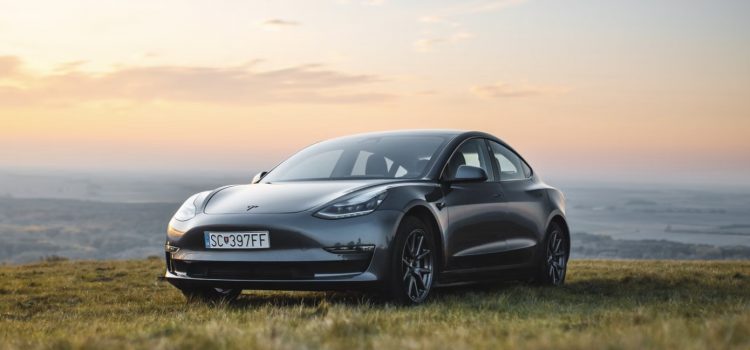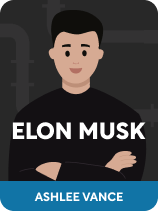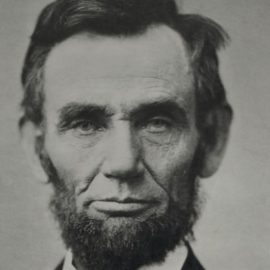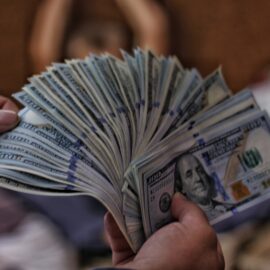

This article is an excerpt from the Shortform book guide to "Elon Musk" by Ashlee Vance. Shortform has the world's best summaries and analyses of books you should be reading.
Like this article? Sign up for a free trial here .
Do you want to know how Tesla became successful? Is Tesla’s success attributed to Elon Musk, the Tesla employees, the government, or the public?
The story of how Tesla became successful is told in many small chapters. Tesla suffered severe financial and manufacturing issues early on and struggled to stay in business. It wasn’t until 2010 that the rest of the world started to believe in Musk’s vision.
Keep reading to learn how Tesla became successful and who contributed to its success.
Success in Small Steps
By 2010, Tesla’s fortunes turned a corner. The U.S. Department of Energy (DOE) struck a deal with the company, loaning them $465 million. Tesla used some of this money to buy a factory to manufacture their cars, hoping to send out Model S cars to consumers. A few months later, Tesla went public, raising $226 million. This was a huge turning point and largely impacted how Tesla became successful.
Then, after Tesla started shipping out the Model S in 2012, the public perception of electric vehicles gradually started to shift, warming to the idea of electric cars. Tesla had addressed manufacturing issues and common complaints about the car.
Vance explains that Tesla’s salespeople sold enough cars in the span of a few weeks to make a large profit, ending their first quarter as a public company with $562 million in sales. Tesla’s stock prices rose, and they paid off their loan to the DOE early. Hardworking employees were another factor in how Tesla became successful.
By 2013, Tesla’s Model S received the highest Consumer Reports car rating in history—a 99 out of 100—and won awards in the car industry, baffling competitors and naysayers.
Later that year, Musk announced plans for a free charging network, meaning consumers would no longer have to pay to fuel their cars. His plan was to generate more excitement around electric cars and encourage consumers to transition from gasoline to electric cars. He later revealed that for the price of a tank of gas, customers had the option to replace the batteries in their car for a quicker recharge.
(Shortform note: Tesla is an example of Gary Keller’s idea of sequential success, where you accumulate small wins one after the other, like a domino fall, rather than all at once. In The One Thing, Keller explains that success builds on success sequentially, as you move from one important task to another, until you reach the highest level possible. Over the course of a few years, Tesla accumulated small wins—such as addressing the manufacturing issues, selling enough cars to make a profit, receiving high ratings, and announcing the new charging network—instead of one big win that made the company an instant success. While one win probably wouldn’t have ensured Tesla’s survival, its accumulated sequential success did.)
| Alternative Perspective: The Government’s Role in How Tesla Became Successful Tesla’s survival—and success—largely relied on going public and on taking advantage of the timing of new loans from the DOE. In A Promised Land, former president Barack Obama describes the thought process behind setting up these loans, as he recognized that tackling climate change was crucial. His administration was the first to put in place a White House team to seriously address climate change. Like Musk, the Obama administration saw that U.S. public policy was massively tilted toward fossil-fuel interests, with special tax breaks for oil companies, public highway subsidies, and government-funded oil pipelines and ports all contributing to America’s disproportionate share of global emissions. Early on, the Obama administration tried to reverse this policy course by embedding $90 billion in clean energy investments into the American Recovery and Reinvestment Act (the “stimulus bill”). Among other things, these investments planted the seeds of what would become a green energy revolution throughout the 2010s, providing funding for wind turbines, clean-energy battery storage systems, and the retrofitting of existing buildings to make them more energy-efficient. The stimulus also provided loans to clean-energy technology companies, such as Tesla. These loans were crucial to the success of companies like Tesla. |
The Improved Design of the Model S
The Model S was an important factor in how Tesla became successful. Vance explains that Musk wanted to perfect the car, not just create a functional electric car. The team improved the design of the Model S and reduced the weight of the car by making it out of aluminum.
They also added extra features that would enhance Model S. For example, Musk had Tesla’s cars equipped with a touch-screen display, which had never been done in a car before. Although these caused more delays on the production of the car, many of these features are now trademarks of Tesla’s cars.
Vance notes that Tesla introduced other features to change the way cars are manufactured, serviced, and sold. Notably, he enabled overnight software upgrades and regenerative braking, which extends the life of brake pads and thus decreases the maintenance needed for the car (instead of brake pads slowing the rotation of the tires, regenerative braking reverses the motor, thus slowing the vehicle down). Customers appreciated these changes, and Tesla’s reputation for quality increased.
| Tesla’s Design Features Were One of Seven Important Keys to Success While Vance notes that the perfected car was a major part of how Tesla became successful, Peter Thiel situates how the design features fit into Musk’s overall plan and approach toward Tesla. In Zero to One (which happens to be one of Musk’s favorite books), Thiel explains that Tesla is one of the few cleantech companies that lasted because it had good answers to Thiel’s seven entrepreneurial questions: Technology: What made Tesla really stand out was its ability to integrate many components—like the aluminum body, touch screen, software upgrades, and regenerative braking—into one great product, the (2013) Tesla Model S sedan. Timing: Musk seized the opportunity to secure a half-billion-dollar loan from the government in the small window before the government pulled the plug on cleantech subsidies. Monopoly: Tesla started with a tiny submarket it could dominate: high-end electric sports cars. It then moved into the luxury electric sedan market and is positioned to continue expanding into broader markets. Team: Musk assembled a team good at both engineering and sales. Distribution: Tesla decided to own the distribution chain. It sells and services its cars in its own stores. The cost is higher than for traditional dealership distribution, but the approach gives it control over the customer experience, strengthens its brand, and saves money in the long run. Durability: By getting a head start, moving faster than anyone else, and establishing a strong brand, Tesla is set to extend its lead in the future. Secrets: Tesla realized that while rich people wanted to look green by buying an electric car, they’d rather look green and cool at the same time—if he gave them the opportunity, they’d choose his sleek car over the boxy Prius. Tesla created a product based on the secret that cleantech was in large part a social phenomenon. |

———End of Preview———
Like what you just read? Read the rest of the world's best book summary and analysis of Ashlee Vance's "Elon Musk" at Shortform .
Here's what you'll find in our full Elon Musk summary :
- A look into Elon Musk’s childhood and early companies
- Musk's roles in SpaceX and Tesla, and later, in SolarCity
- The traits and management methods that helped Musk succeed






